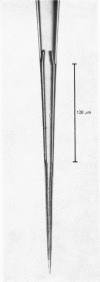Abstract
1. The construction and properties of a new design of pH-sensitive micro-electrode are described. The electrodes are very durable, and have a recessed configuration so that only the extreme tip, which can be as small as 1 μm in diameter, needs to enter the cell.
2. The average intracellular pH in thirty-two snail neurones was 7·4. This was not in accord with a passive distribution of H+ ions across the cell membrane.
3. Changing membrane potential or external pH had only slow effects on internal pH.
4. Removing external K had no effect, and removing external Na had only slow and variable effects on intracellular pH.
5. Anoxia, azide and DNP all caused a slow fall in internal pH.
6. External CO2 caused large and rapid decreases in internal pH, which external bicarbonate appeared to offset slowly. Injected bicarbonate increased internal pH.
7. The size of the pH changes caused by CO2 suggested a minimum intracellular buffering power of 25 m-equiv H+/unit pH per l., equivalent to that of 150 mM Tris maleate, pH 7·4.
8. External ammonia caused a large and rapid increase in internal pH, while the injection of ammonium ions had the opposite effect.
Full text
PDF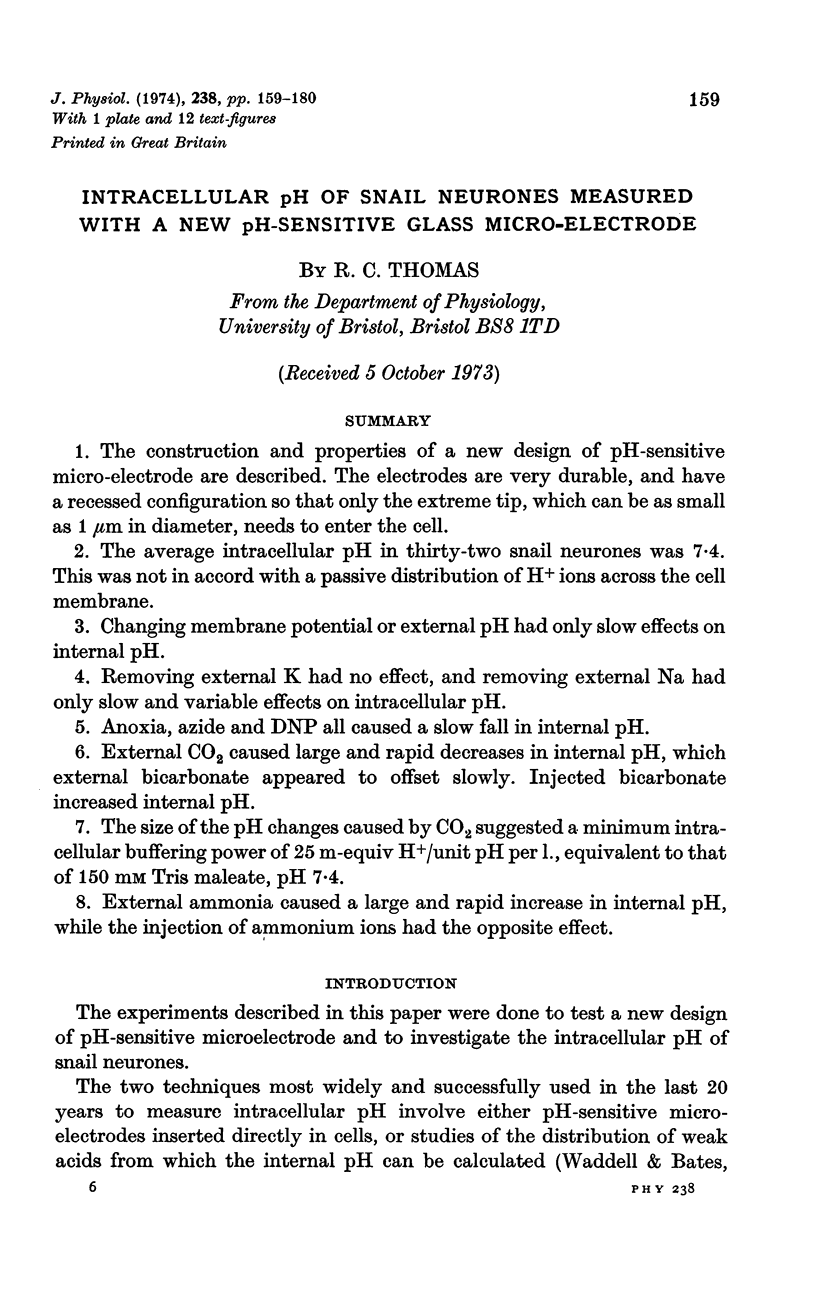
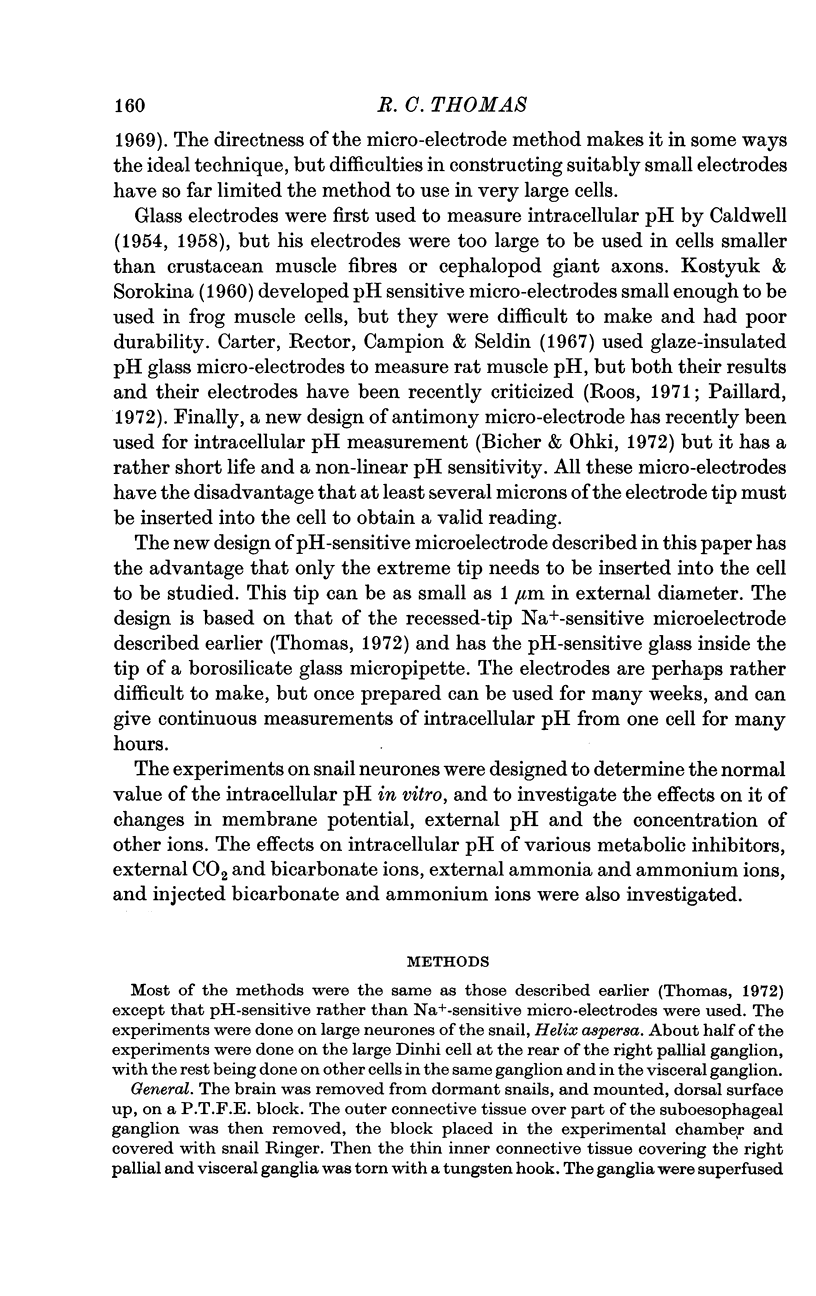
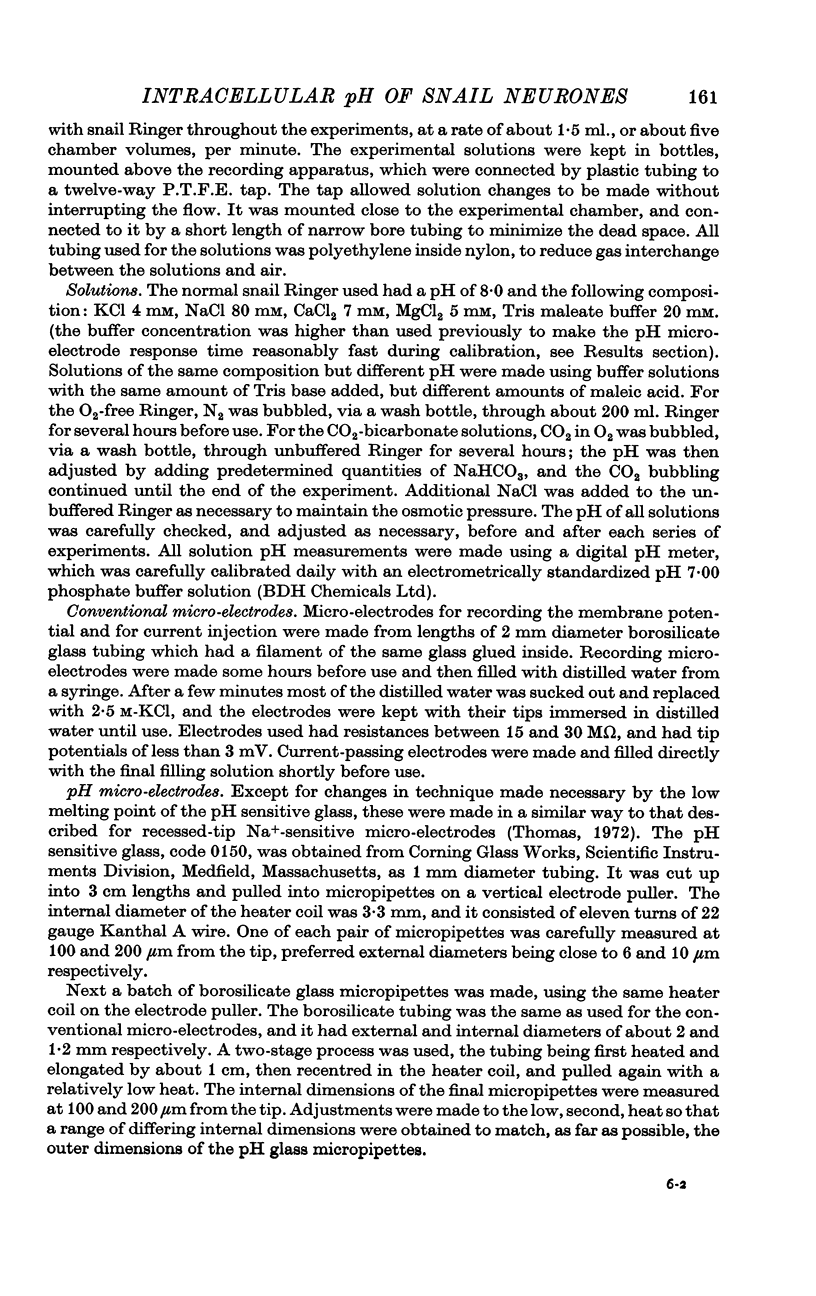
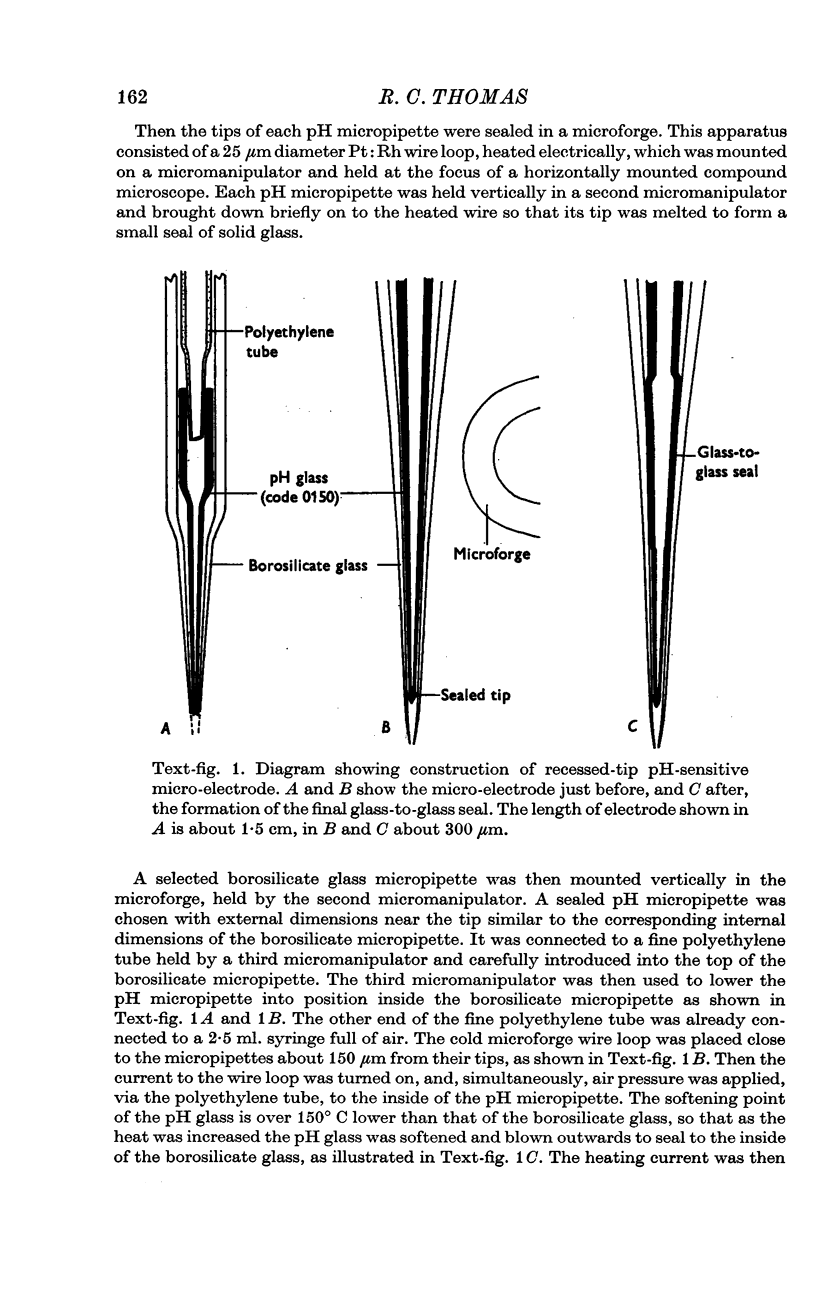
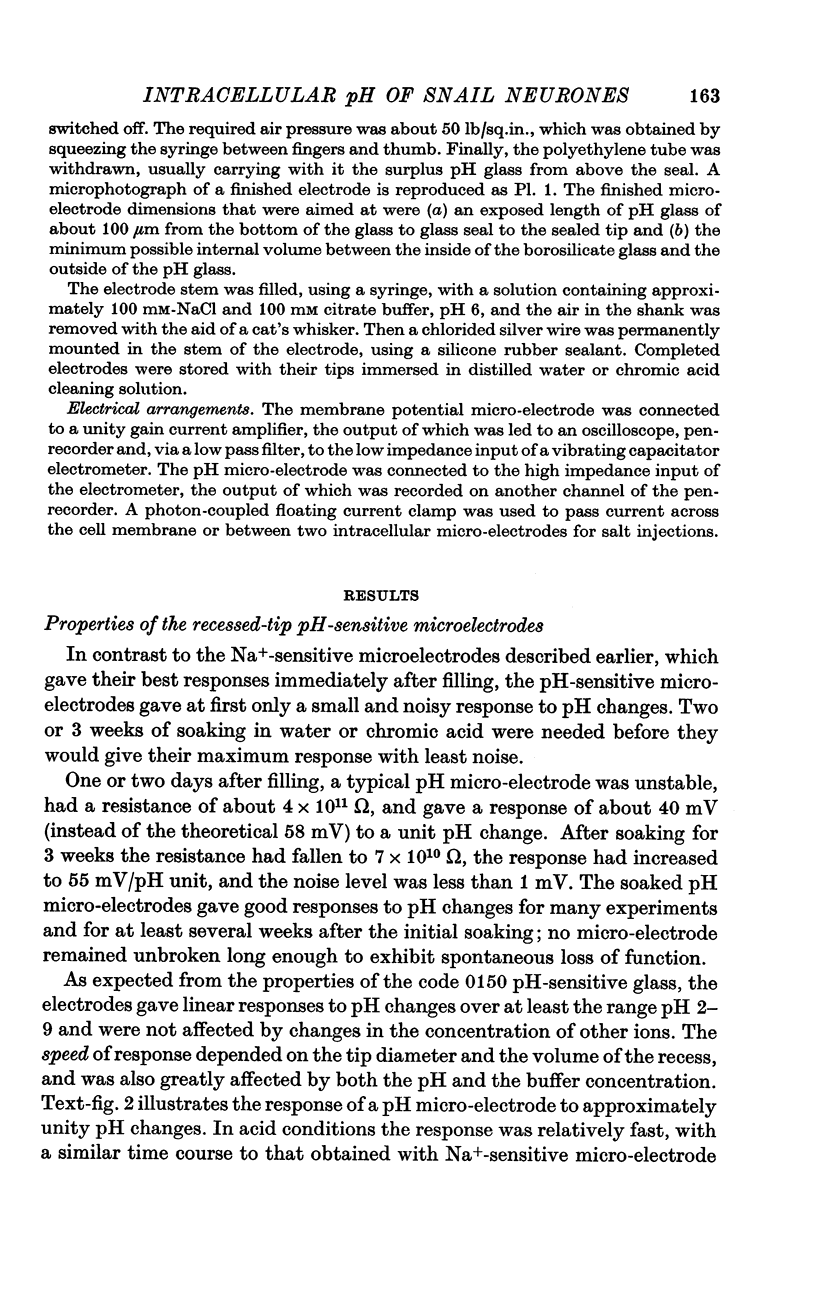
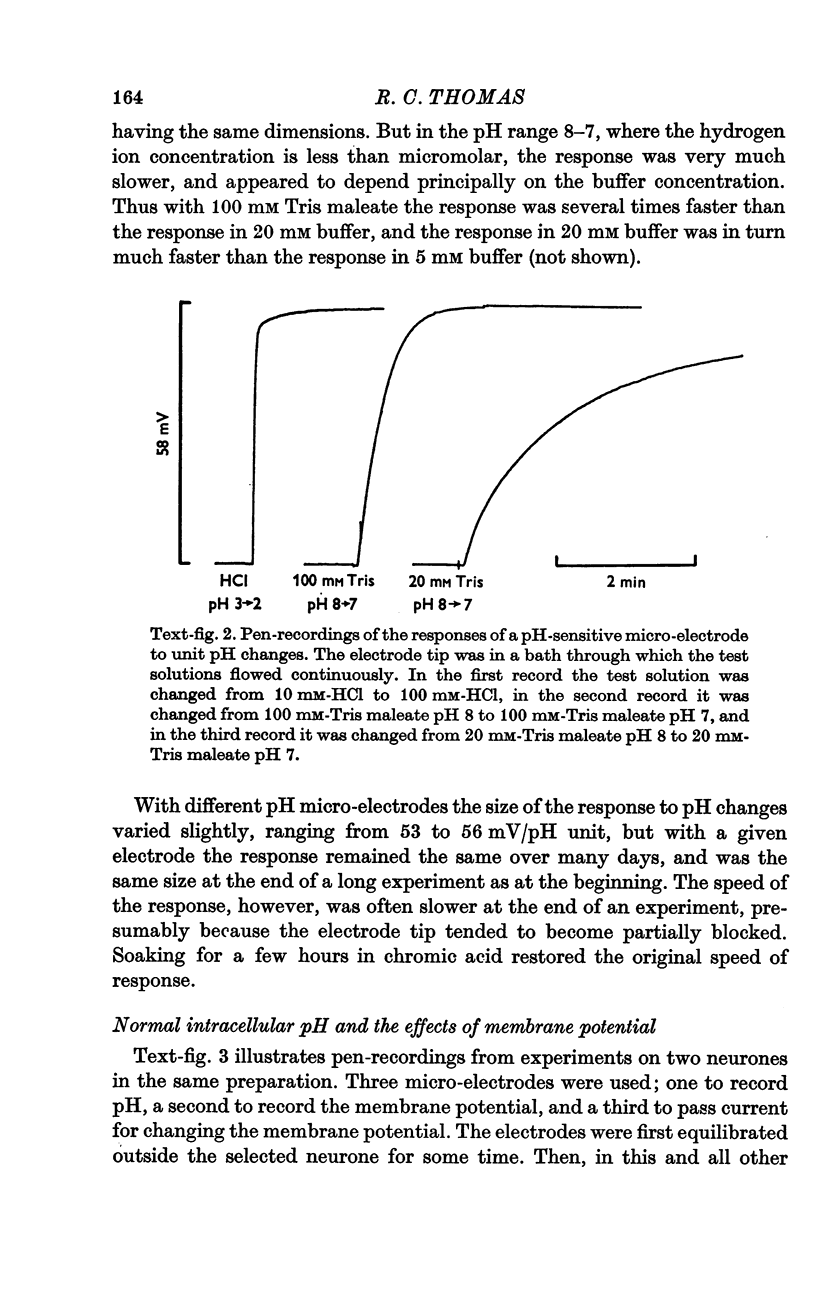
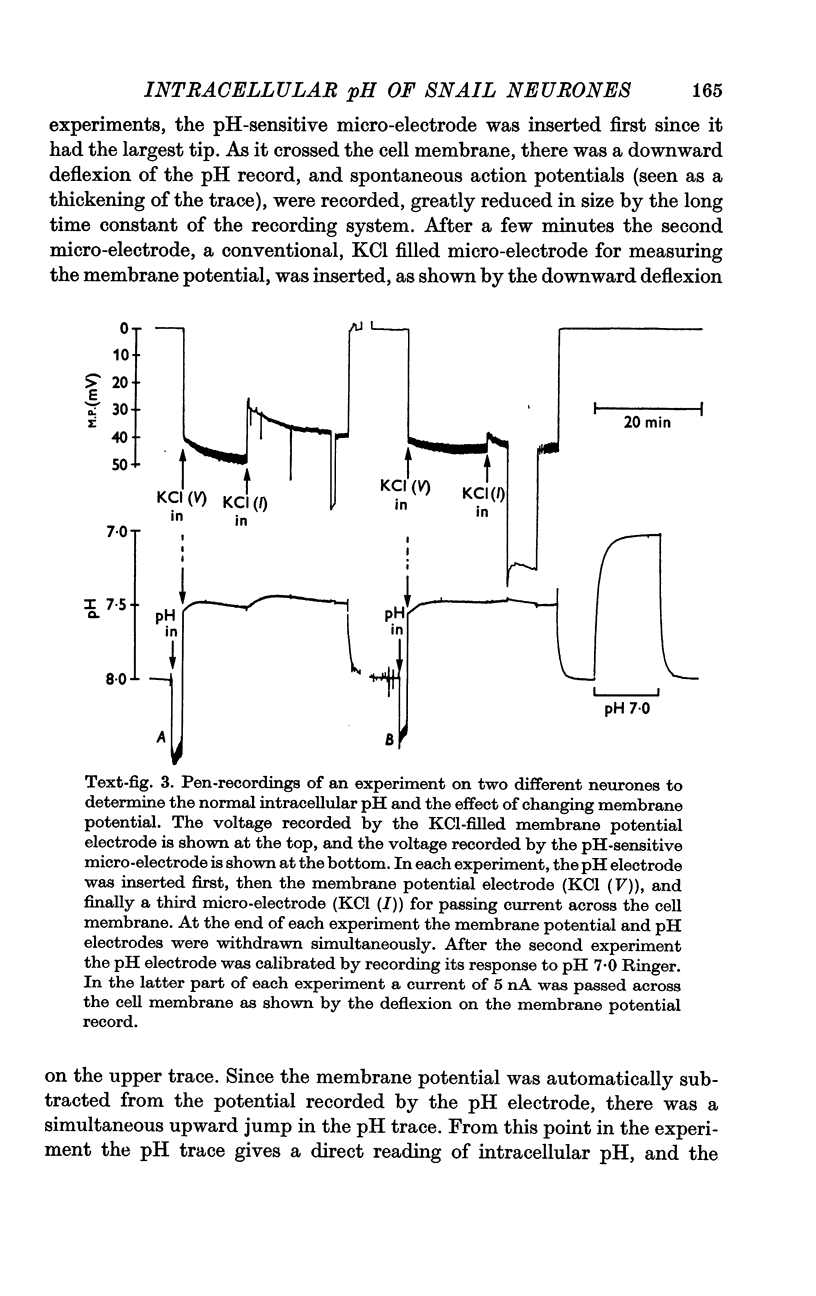
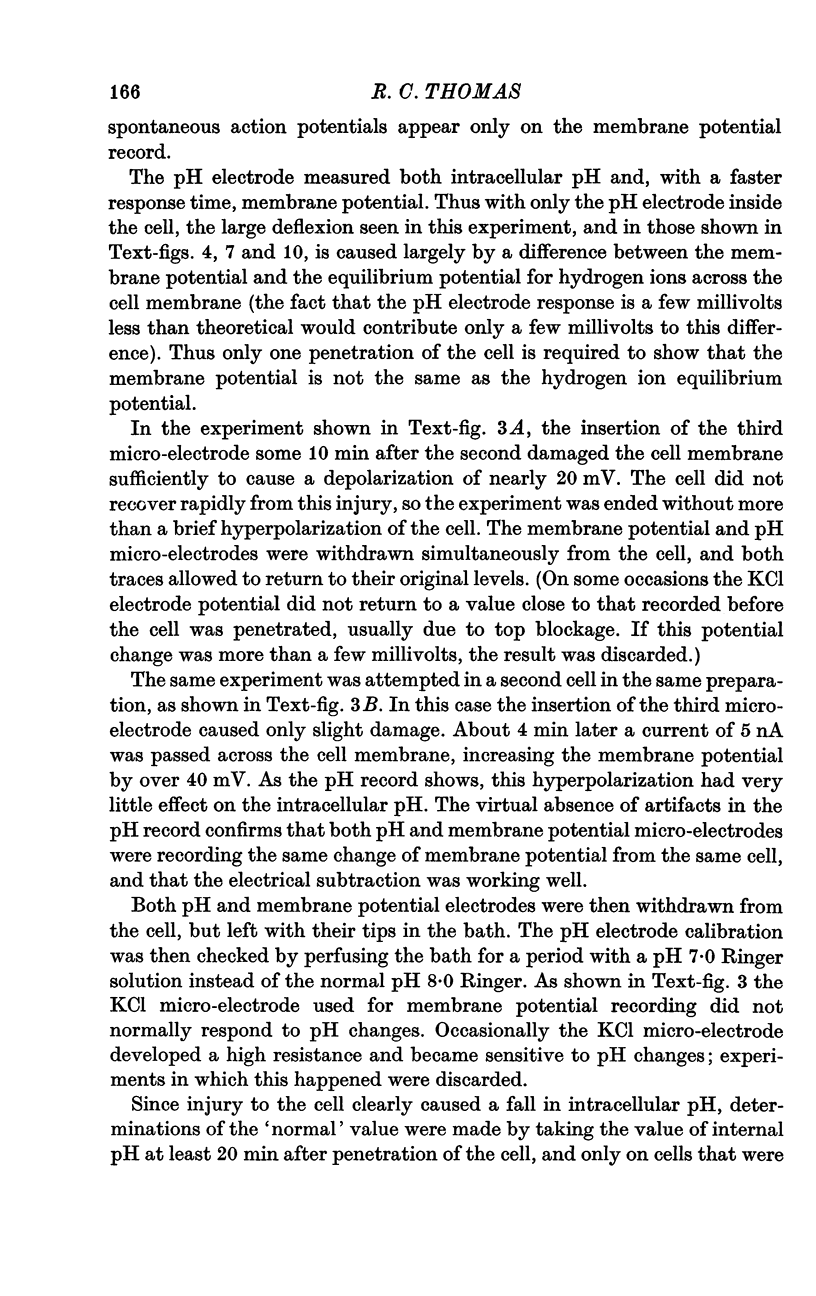
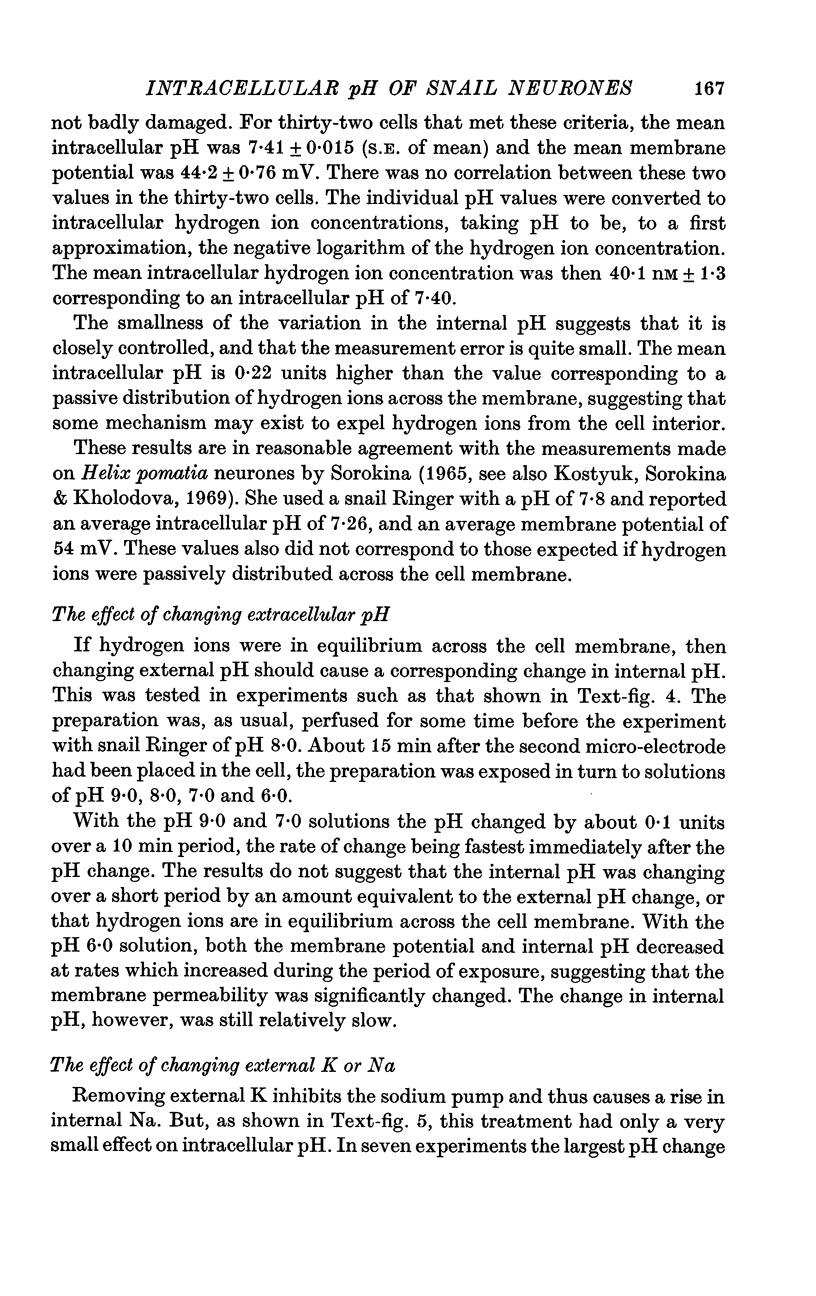
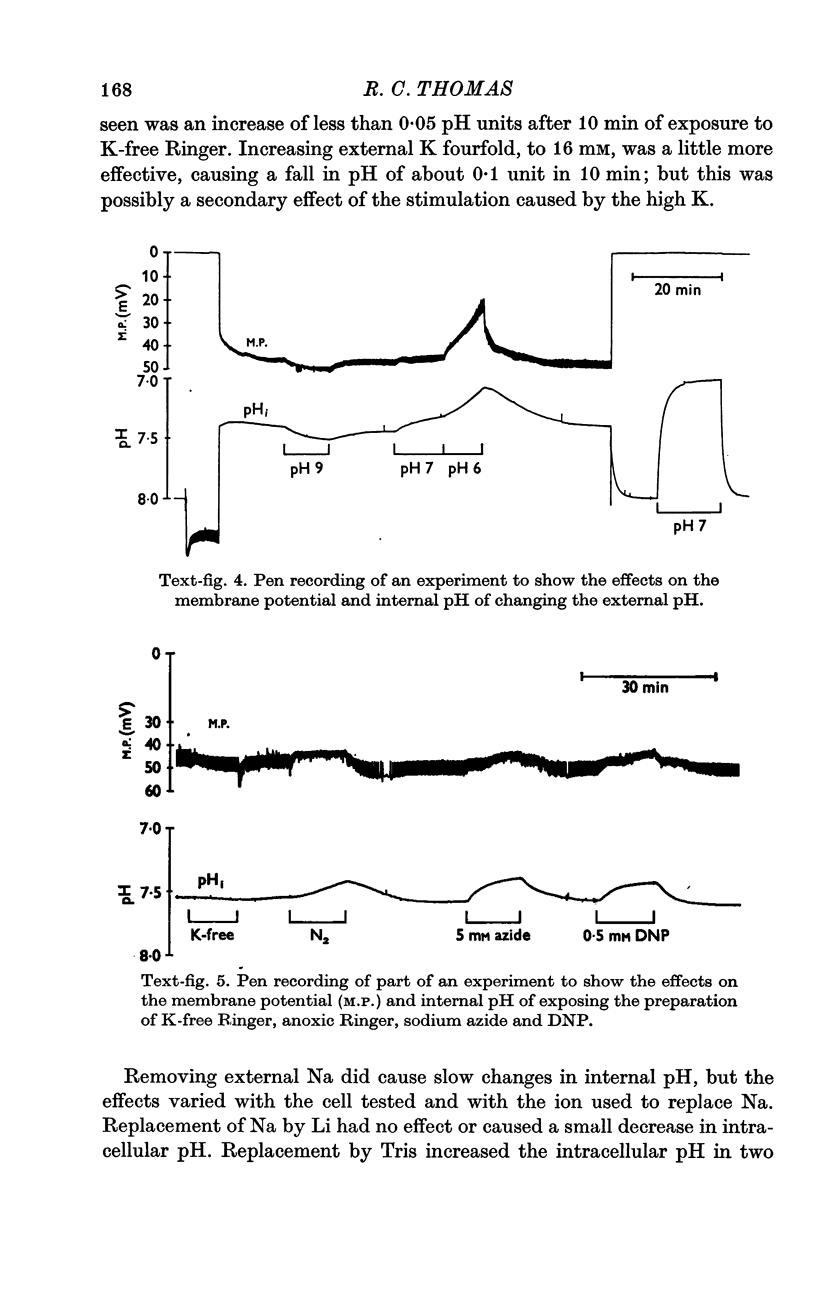
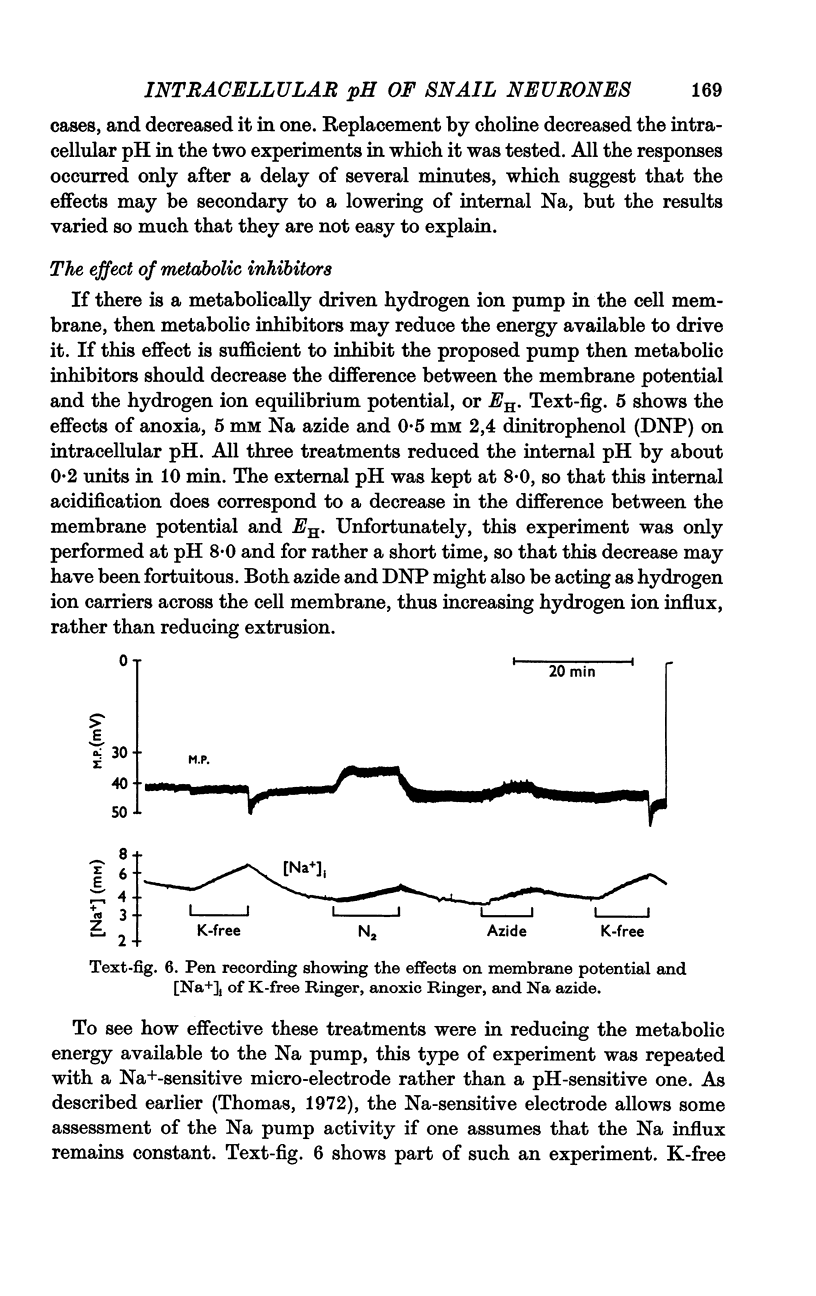
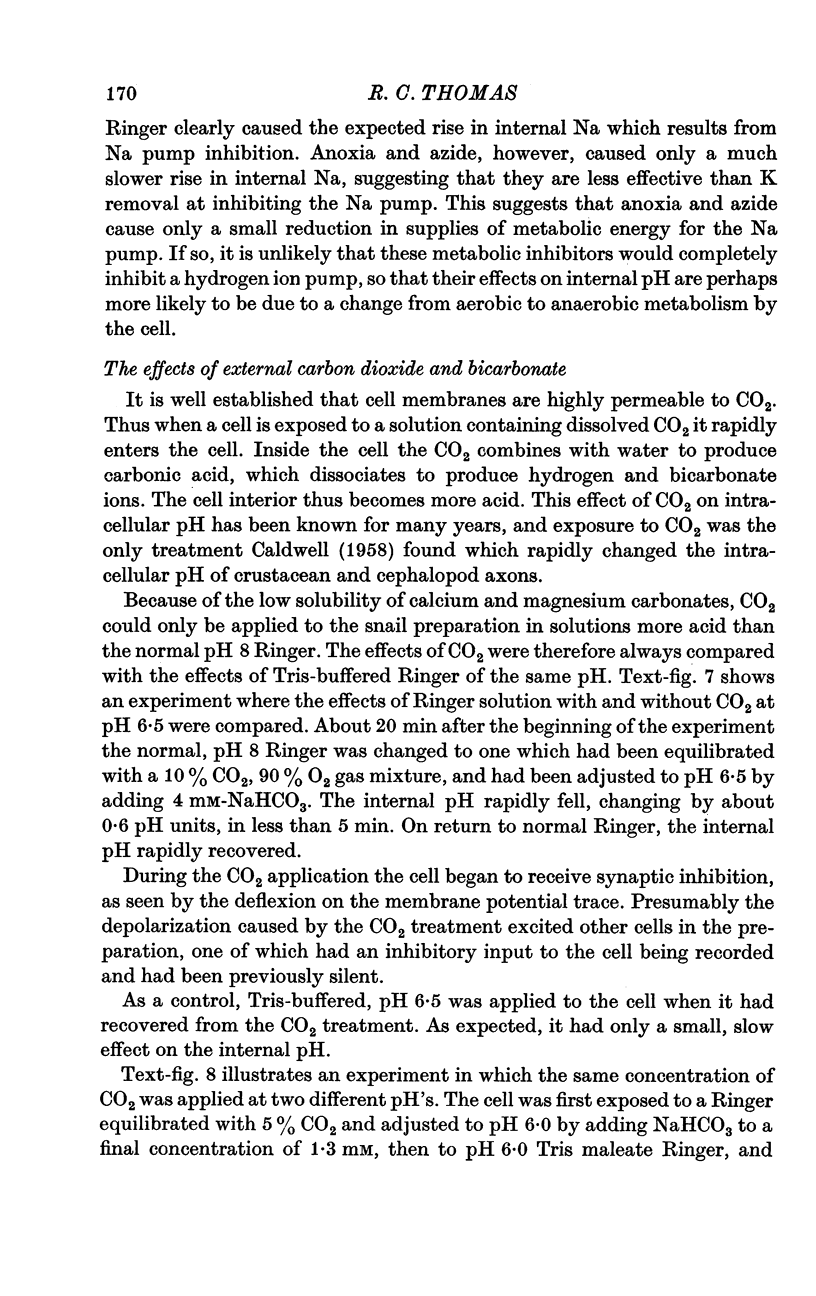
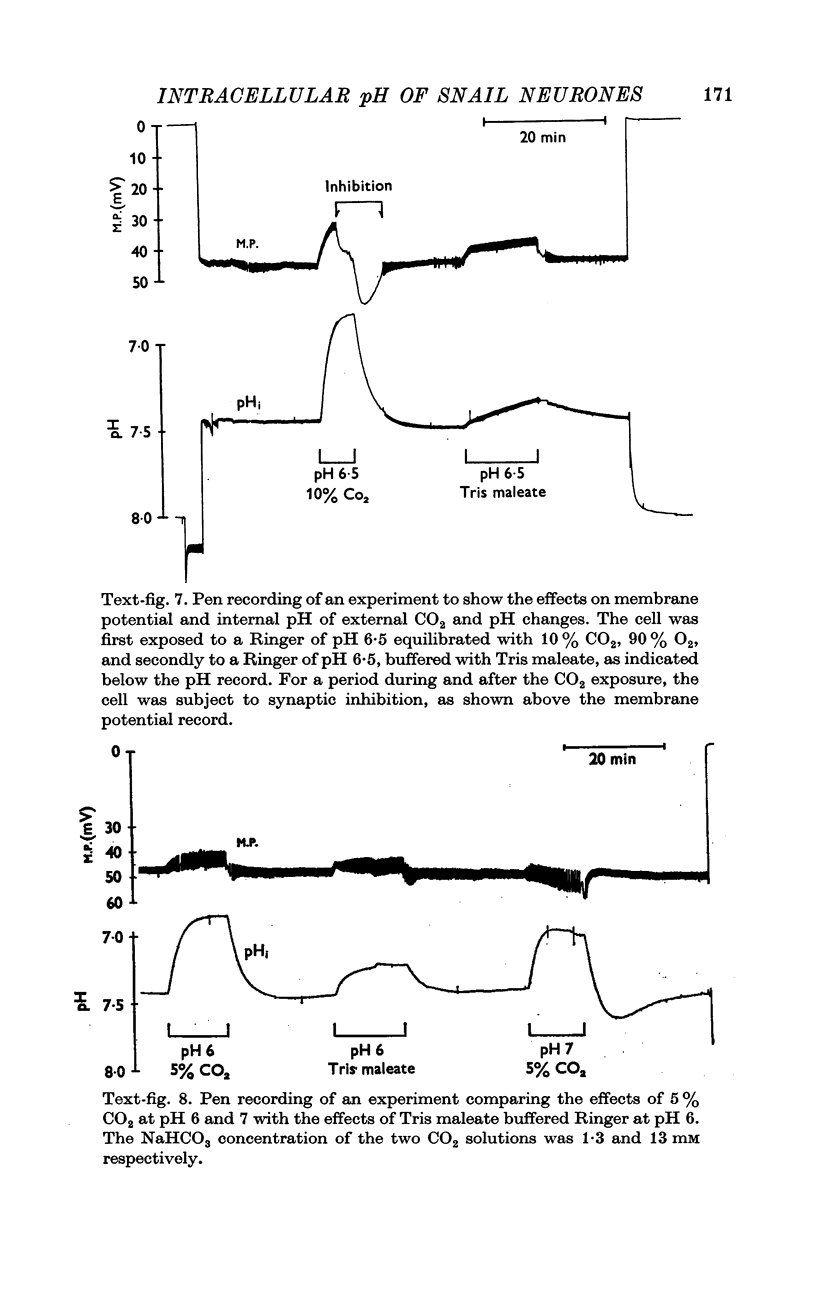
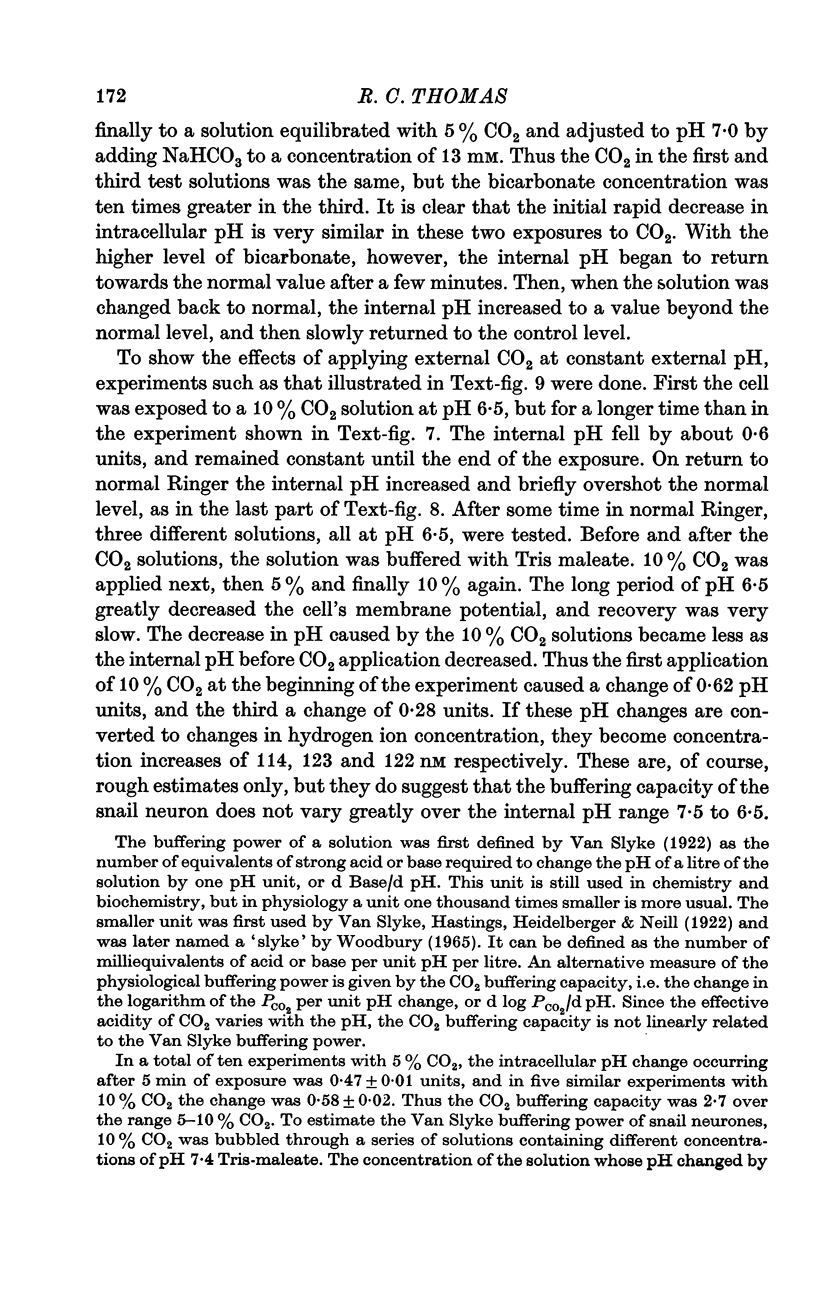
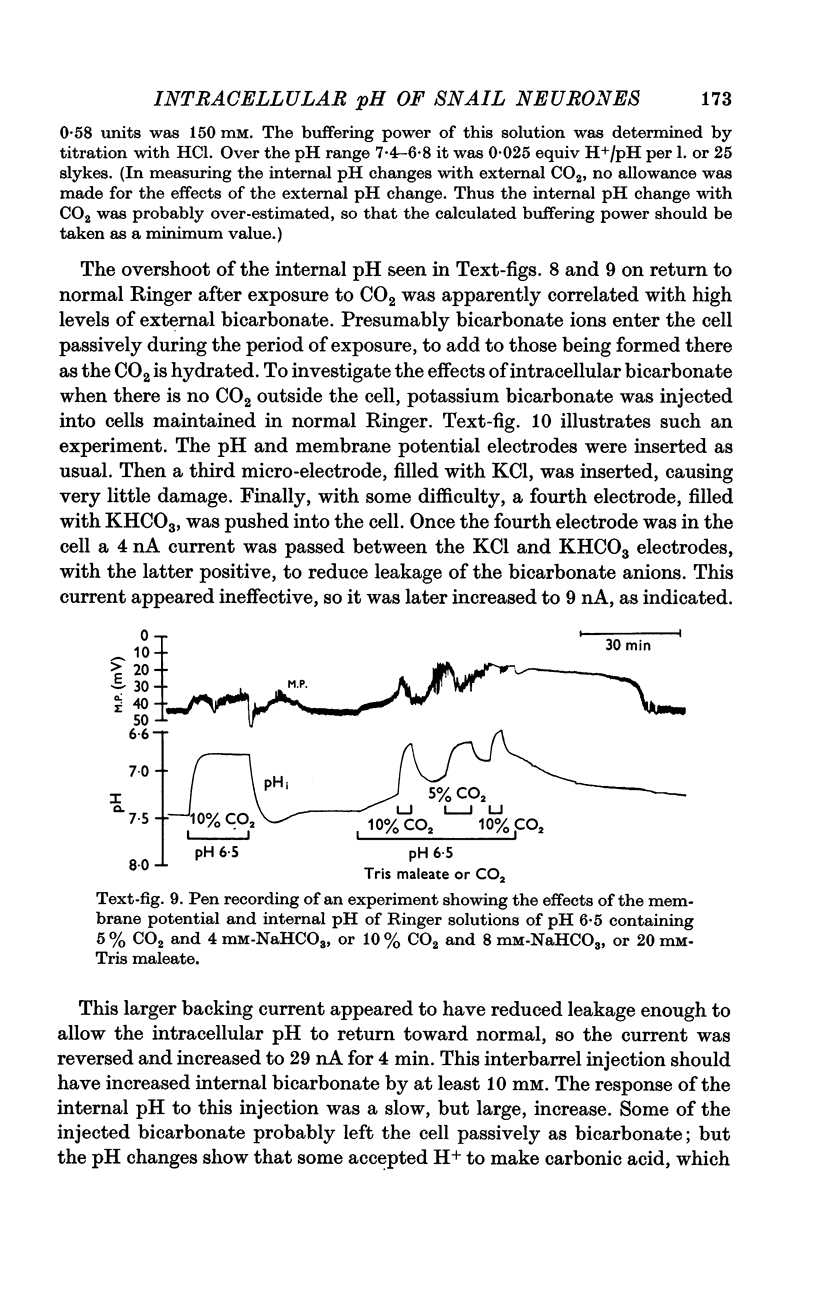
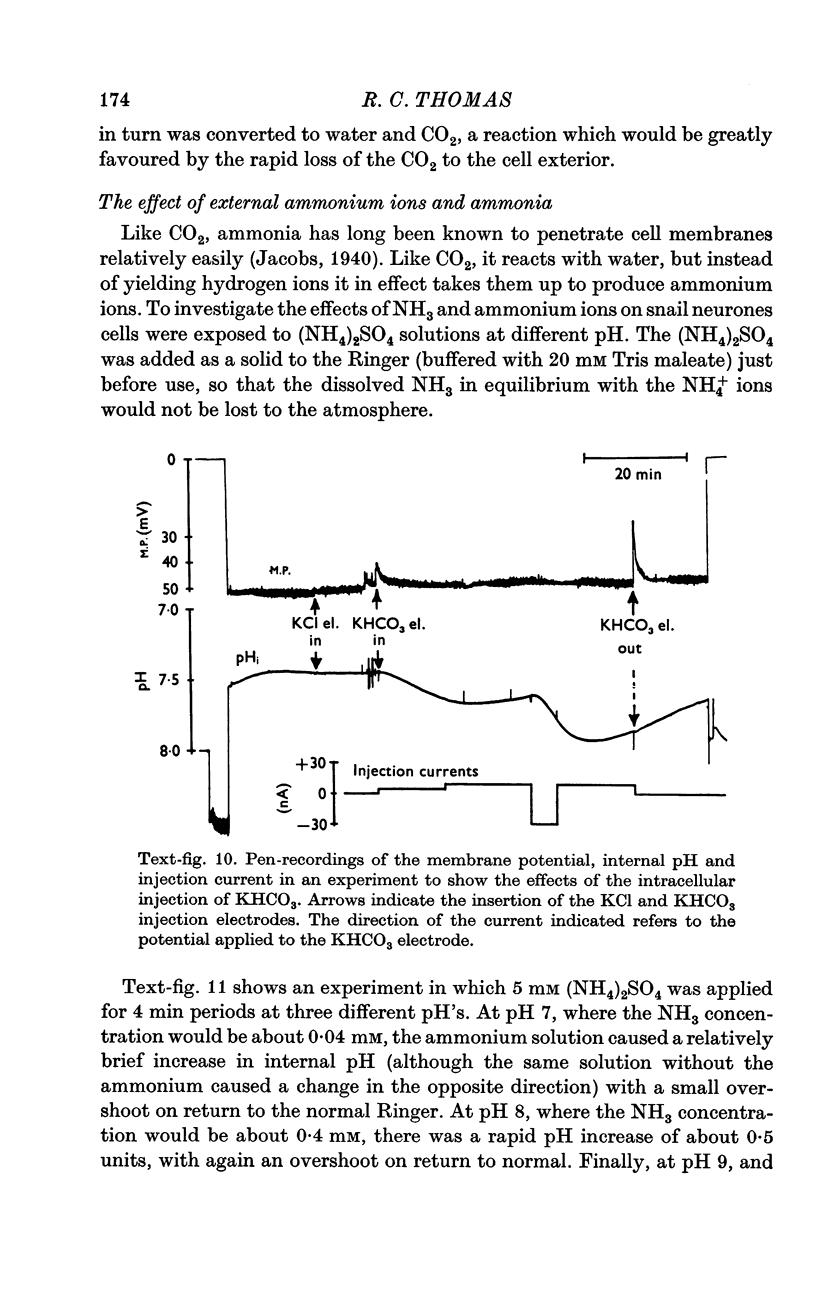
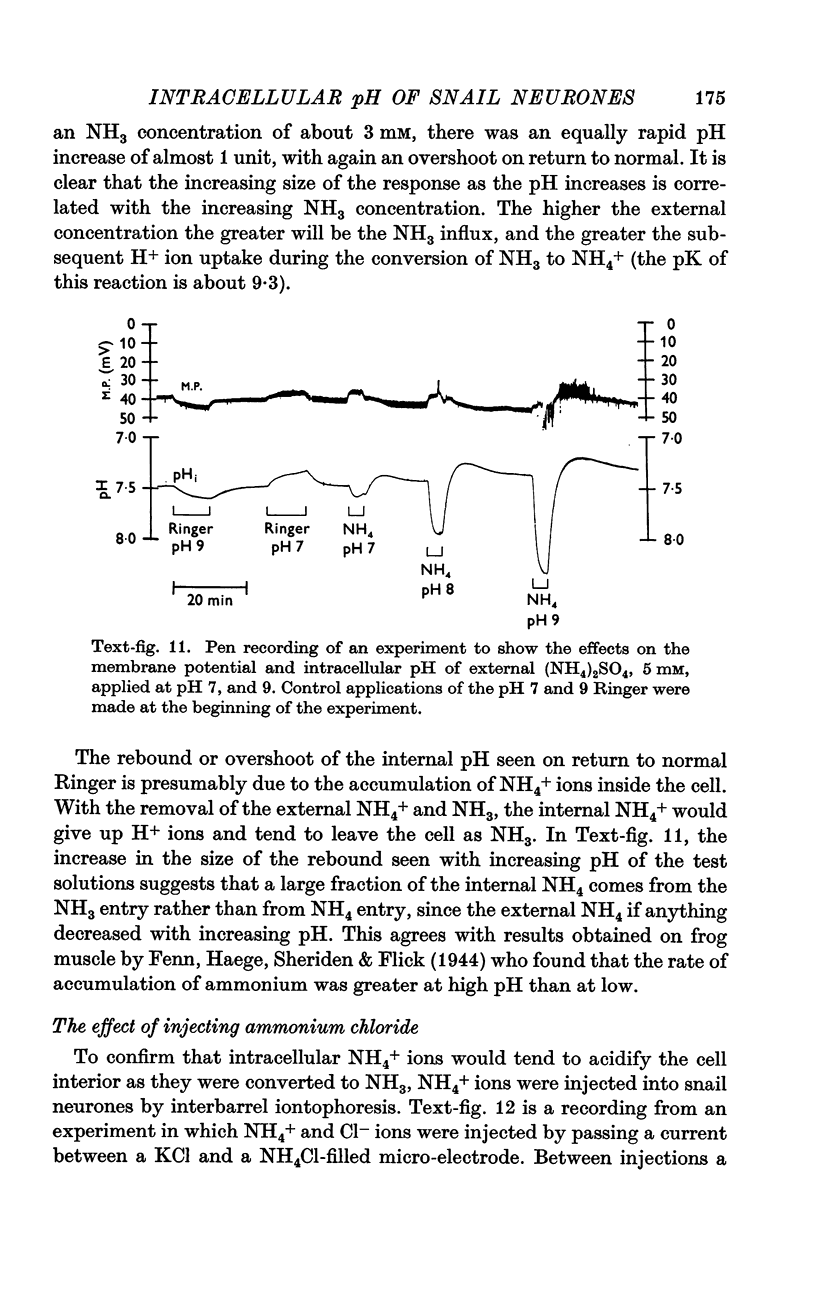
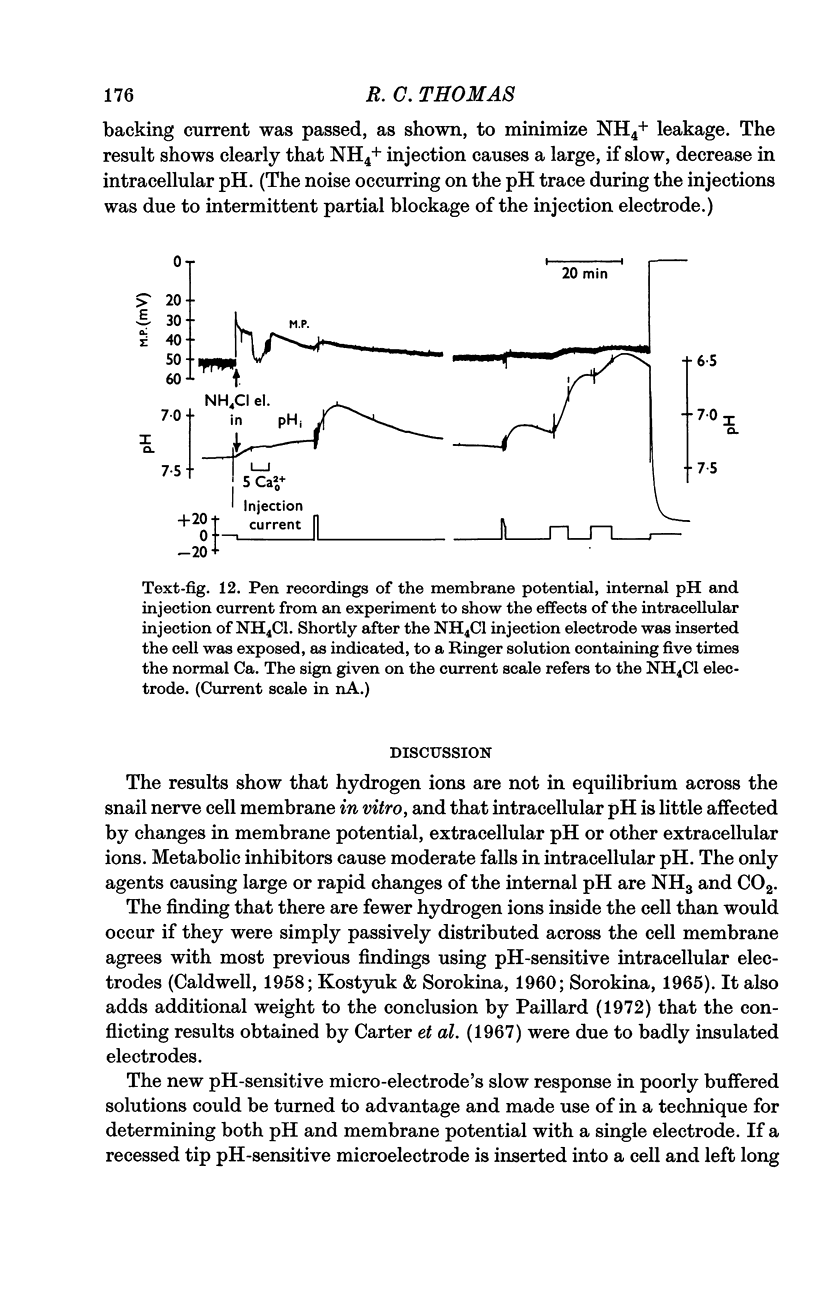
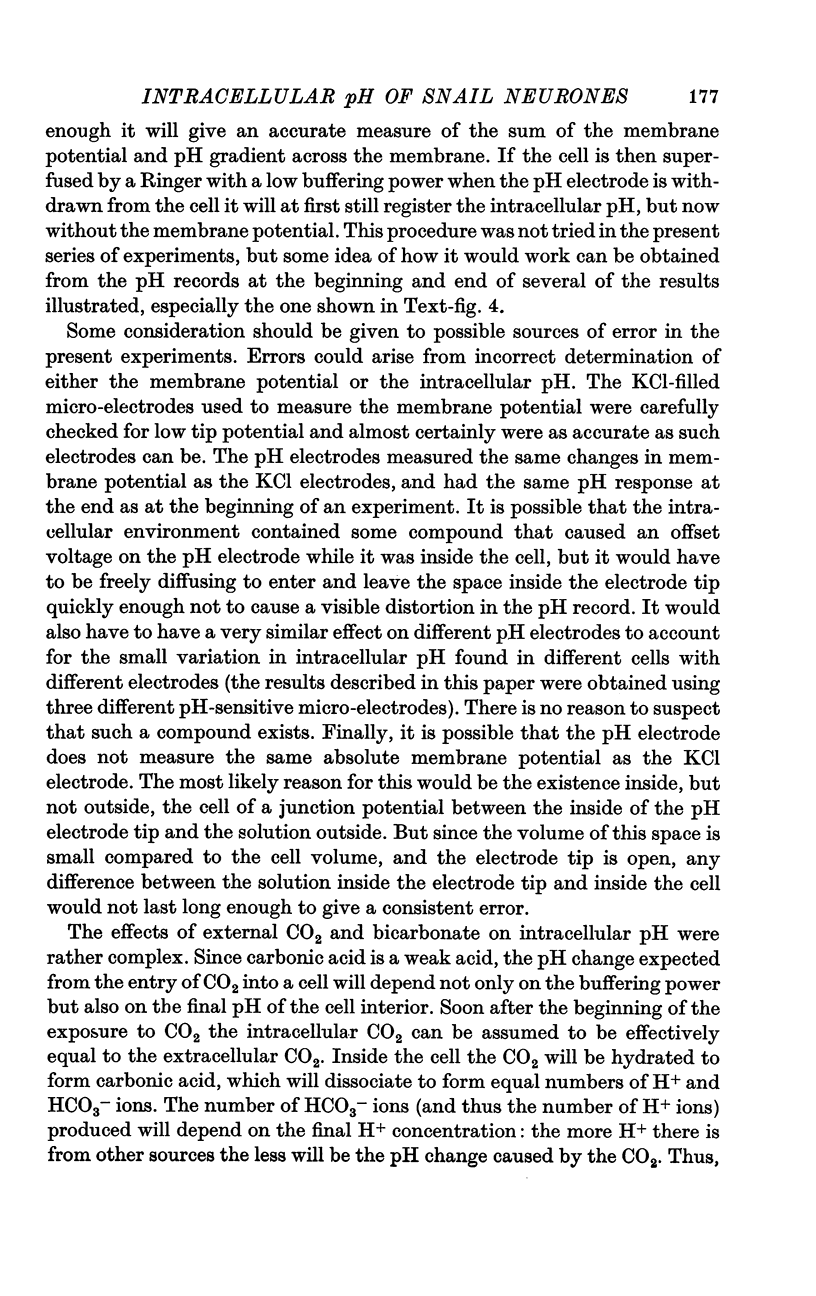
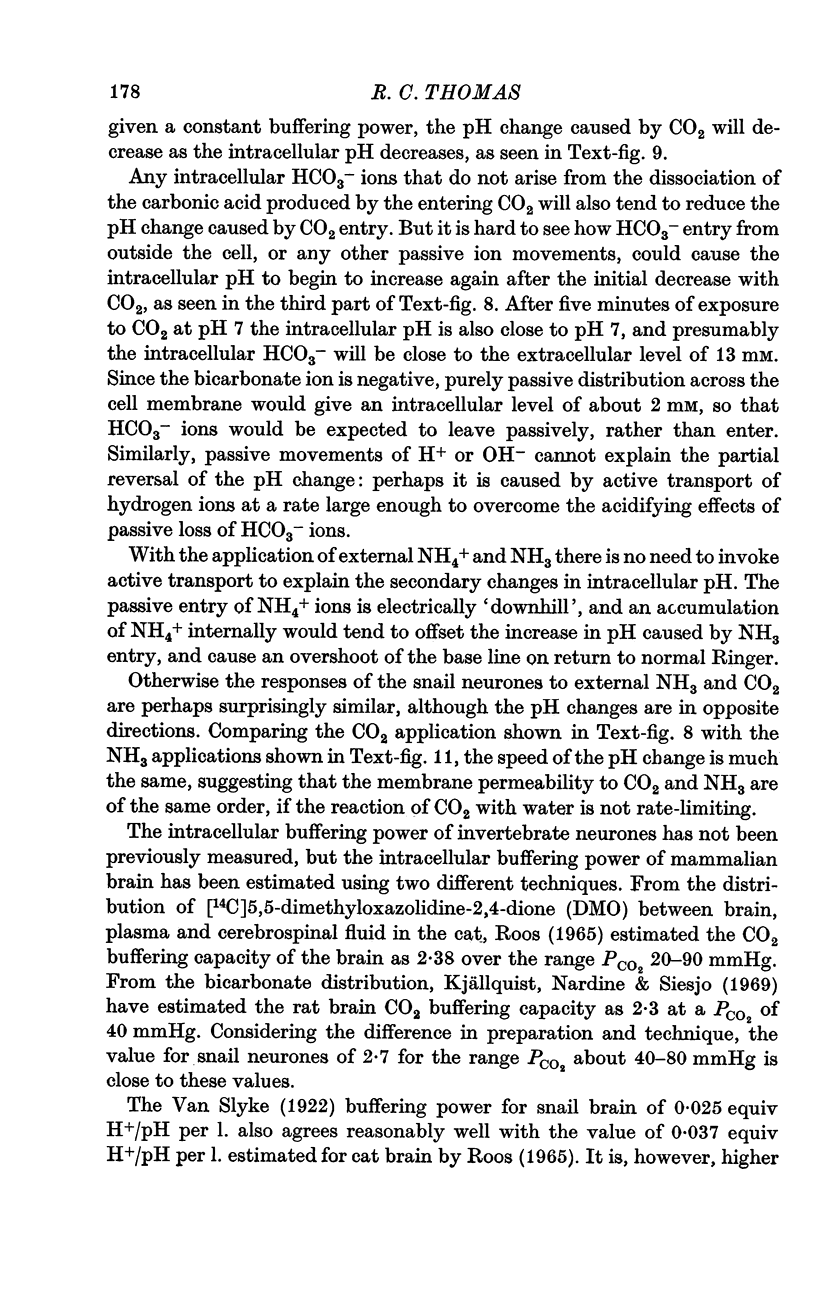
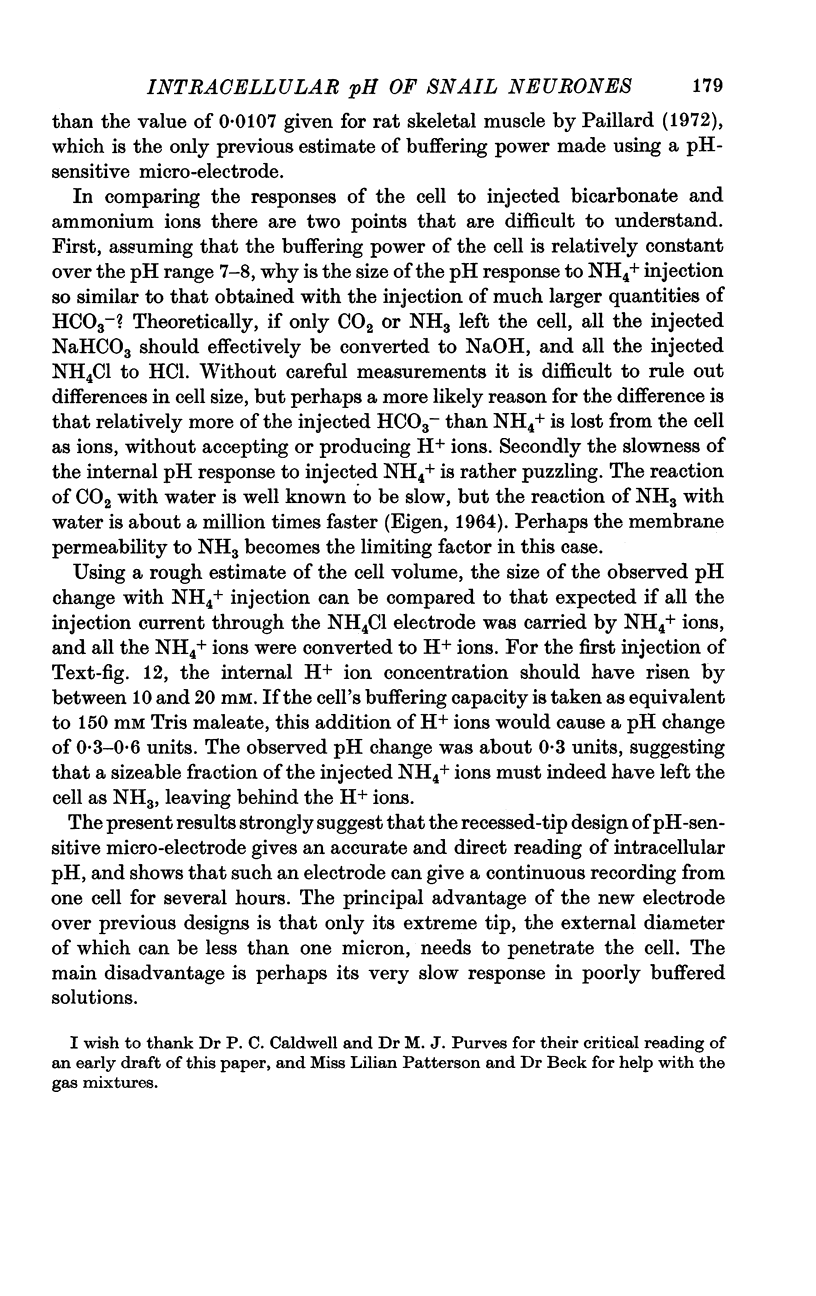
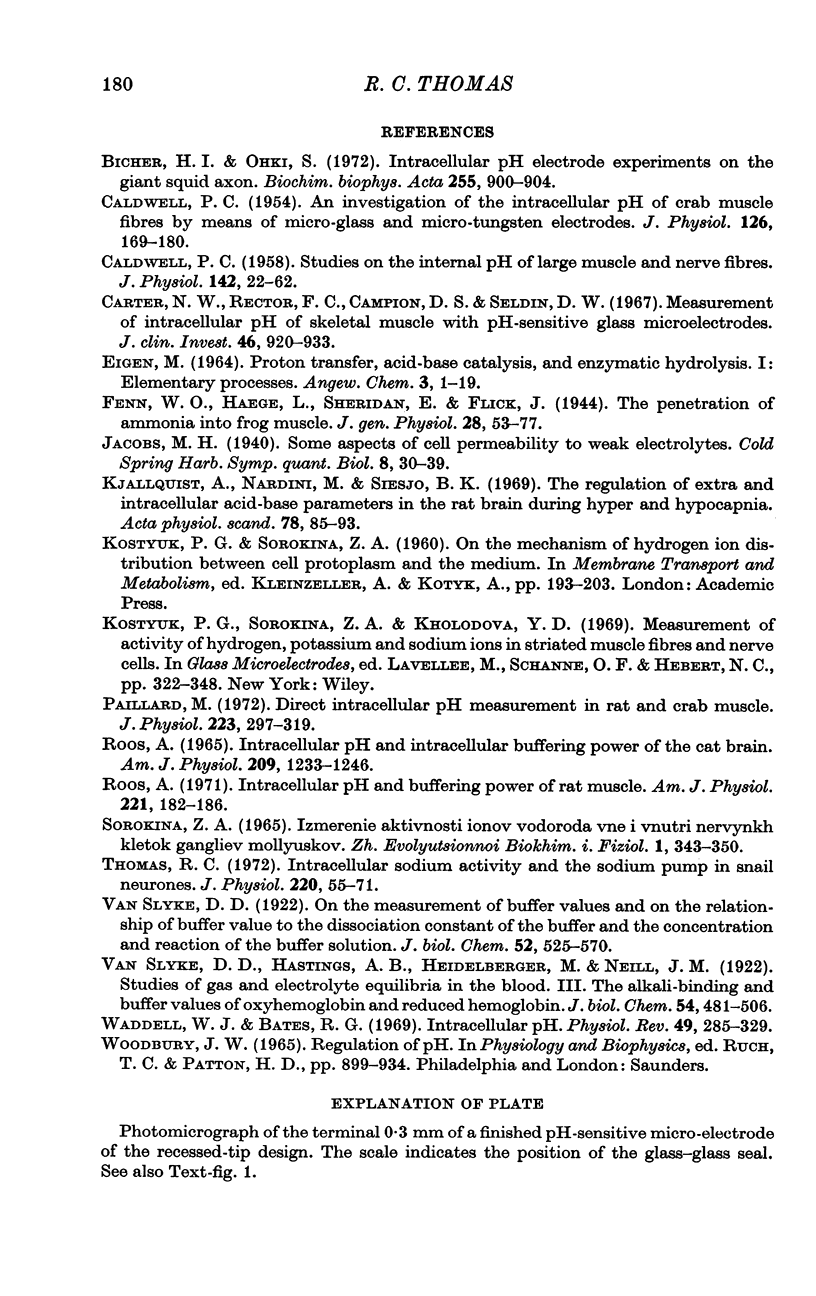
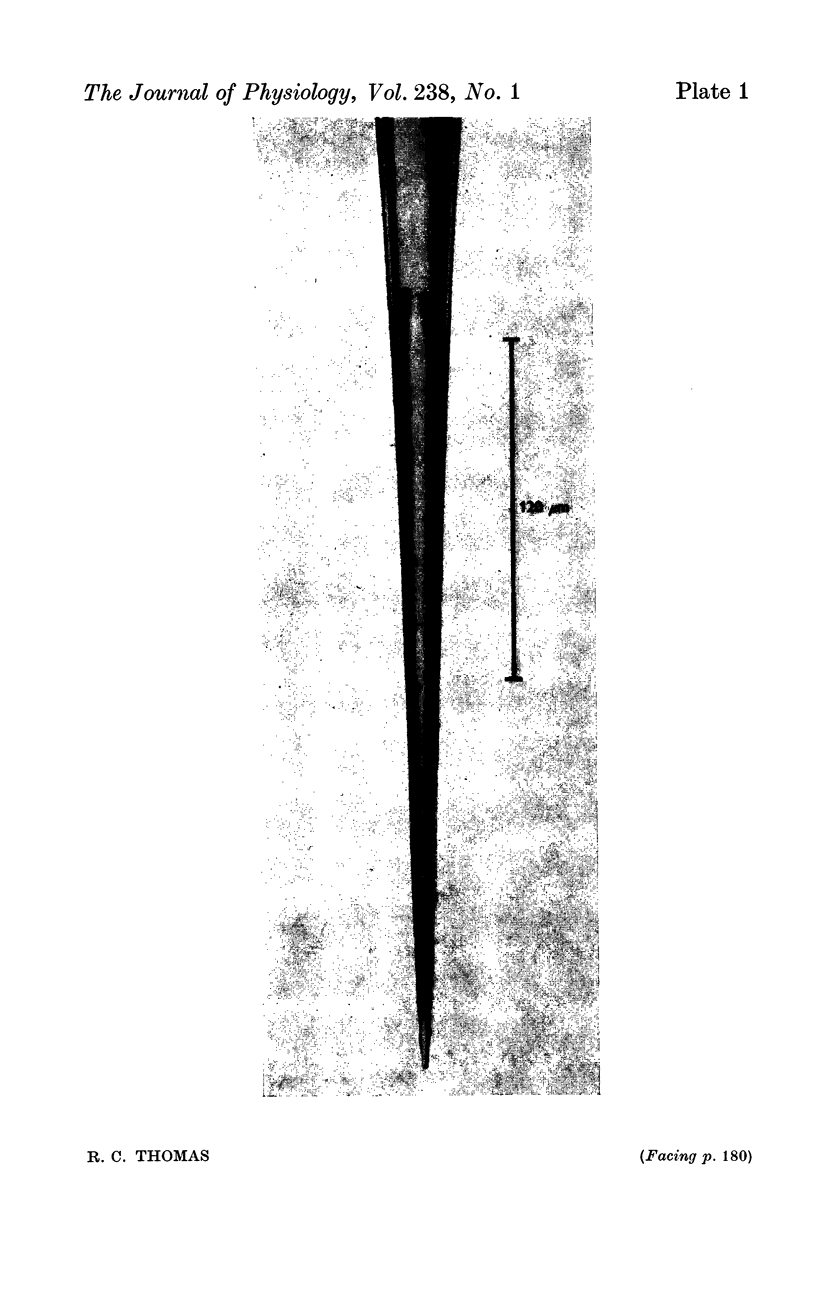
Images in this article
Selected References
These references are in PubMed. This may not be the complete list of references from this article.
- Bicher H. I., Oki S. Intracellular pH electrode. Experiments on the giant squid axon. Biochim Biophys Acta. 1972 Mar 17;255(3):900–904. doi: 10.1016/0005-2736(72)90401-4. [DOI] [PubMed] [Google Scholar]
- CALDWELL P. C. An investigation of the intracellular pH of crab muscle fibres by means of micro-glass and micro-tungsten electrodes. J Physiol. 1954 Oct 28;126(1):169–180. doi: 10.1113/jphysiol.1954.sp005201. [DOI] [PMC free article] [PubMed] [Google Scholar]
- CALDWELL P. C. Studies on the internal pH of large muscle and nerve fibres. J Physiol. 1958 Jun 18;142(1):22–62. doi: 10.1113/jphysiol.1958.sp005998. [DOI] [PMC free article] [PubMed] [Google Scholar]
- Carter N. W., Rector F. C., Jr, Campion D. S., Seldin D. W. Measurement of intracellular pH of skeletal muscle with pH-sensitive glass microelectrodes. J Clin Invest. 1967 Jun;46(6):920–933. doi: 10.1172/JCI105598. [DOI] [PMC free article] [PubMed] [Google Scholar]
- Paillard M. Direct intracellular pH measurement in rat and crab muscle. J Physiol. 1972 Jun;223(2):297–319. doi: 10.1113/jphysiol.1972.sp009848. [DOI] [PMC free article] [PubMed] [Google Scholar]
- Roos A. Intracellular pH and buffering power of rat muscle. Am J Physiol. 1971 Jul;221(1):182–188. doi: 10.1152/ajplegacy.1971.221.1.182. [DOI] [PubMed] [Google Scholar]
- Roos A. Intracellular pH and intracellular buffering power of the cat brain. Am J Physiol. 1965 Dec;209(6):1233–1246. doi: 10.1152/ajplegacy.1965.209.6.1233. [DOI] [PubMed] [Google Scholar]
- Thomas R. C. Intracellular sodium activity and the sodium pump in snail neurones. J Physiol. 1972 Jan;220(1):55–71. doi: 10.1113/jphysiol.1972.sp009694. [DOI] [PMC free article] [PubMed] [Google Scholar]
- Waddell W. J., Bates R. G. Intracellular pH. Physiol Rev. 1969 Apr;49(2):285–329. doi: 10.1152/physrev.1969.49.2.285. [DOI] [PubMed] [Google Scholar]



